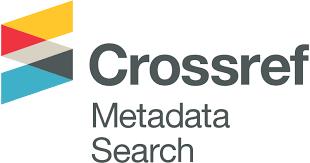Dự báo khả năng nứt do nhiệt của bê tông kết cấu ở tuổi sớm khi bị nhiễu dữ liệu
Email:
doanhtu@utc.edu.vn
Từ khóa:
Học máy, Nứt nhiệt ở tuổi sớm, Mô phỏng số, Dự báo khả năng nứt., Học máy, Nứt nhiệt ở tuổi sớm, Mô phỏng số, Dự báo khả năng nứt
Tóm tắt
Phương pháp số đã chứng minh được tính ưu việt trong việc mô phỏng nhằm dự báo khả năng nứt nhiệt của bê tông ở tuổi sớm (thường là bê tông khối lớn) do công tác đo đạc thường tốn kém và mất thời gian. Bài báo này kết hợp phương pháp số (để xác định dữ liệu đầu vào) và sử dụng phương pháp học máy để dự báo khả năng nứt của khối bê tông kết cấu ở tuổi sớm. Dữ liệu 759 mẫu về khả năng nứt của trụ cầu được thu thập thông qua việc thay đổi chiều cao và chiều rộng của trụ cầu. Sau đó, dữ liệu đó được tạo nhiễu 10% và được sử dụng để huấn luyện các mô hình LR, SVR, RF, KNN, Adaboost, XGboost và Catboost. Sau khi được huấn luyện, mô hình thu được sử dụng để dự báo kết quả của 759 mẫu khi bị nhiễu 0%. Với độ chính xác R2=0,9618 và MAE = 0,032 khi dự báo hệ số nứt, mô hình Catboost có độ chính xác lớn nhất, đồng thời thể hiện khả năng tối ưu trong việc dự báo kể cả khi kết quả đầu vào sử dụng để huấn luyện mạng có nhiễu lên đến 10%. Nghiên cứu góp phần chứng minh khả năng ứng dụng phương pháp học máy trong việc giảm thời gian tính toán và nâng cao độ chính xác trong dự báo khả năng nứt nhiệt của bê tông ở tuổi sớm trong trường hợp chất lượng dữ liệu đầu vào không cao (bị nhiễu)Tài liệu tham khảo
[1]. ACI 207.1R-05, Guide to Mass Concrete, Farmington Hills, MI, USA: ACI 207.1R-05, American Concrete Institute, 2005.
[2]. M. Tia, A. Lawrence, C. Ferraro, T. A. Do, and Y. Chen, Pilot project for maximum heat of mass concrete, Florida. Dept. of Transportation, 2013
[3]. T.A. Do, T.H. Nguyen, T.X. Vu, T.T. Hoang, T.D. Tran, T.T. Bui, Adiabatic temperature rise and thermal analysis of high-performance concrete bridge elements, In ICSCEA 2019: Proceedings of the International Conference on Sustainable Civil Engineering and Architecture, 2020, Springer, Singapore, 313-423.
[4]. M.Y. Mansour, M.U.R.A.T. Dicleli, J.Y. Lee, J.J.E.S. Zhang, Predicting the shear strength of reinforced concrete beams using artificial neural networks, Engineering Structures, 26(6) (2004) 781-799.
[5]. S. Lai, M. Serra, Concrete strength prediction by means of neural network, Construction and Building Materials, 11(2) (1997) 93-98.
[6]. R. Cook, T. Han, A. Childers, C. Ryckman, K. Khayat, H. Ma, J. Huang, A. Kumar, Machine learning for high-fidelity prediction of cement hydration kinetics in blended systems, Materials & Design, 208 (2021). https://doi.org/10.1016/j.matdes.2021.109920
[7]. A.A. Elshafeyet, N. Dawood, H. Marzouk, M. Haddara, Crack width in concrete using artificial neural networks, Engineering Structures, 52 (2013) 676-686. https://doi.org/10.1016/j.engstruct.2013.03.020
[8]. D. Maity, A. Saha, Damage assessment in structure from changes in static parameter using neural networks, Sadhana, 29(3) (2004) 315-327.
[9]. H.N.Tran, S. Khatir, G. De Roeck, T.B. Tien, M.A. Wahab, An efficient artificial neural network for damage detection in bridges and beam-like structures by improving training parameters using cuckoo search algorithm, Engineering Structures, 199 (2019).
[10]. P.N. Huynh, Development of an artificial neural network based-prediction model for bond strength of FRB bars in concrete, Transport Communications Science Journal, 75 (2024) 1502-1517. https://doi.org/10.47869/tcsj.75.4.3
[11]. M. Mohtasham Moein, A. Saradar, K. Rahmati, S.H. Ghasemzadeh Mousavinejad, J.Bristow, V. Aramali, M. Karakouzian, Predictive models for concrete properties using machine learning and deep learning approaches:A review, Journal of Building Engineering, 63 (2023). https://doi.org/10.1016/j.jobe.2022.105444
[12]. H.T. Thai, Machine learning for structural engineering:A state-of-the-art review, Structures, 38 (2022) 448-491. https://doi.org/10.1016/j.istruc.2022.02.003
[13]. H.T. Nguyen, B. Cosson, M.F. Lacrampe, T.A. Do, Numerical simulation of reactive polymer flow during rotational molding using smoothed particle hydrodynamics method and experimental verification, International Journal of Material Forming, 11 (2018), 583-592.
[14]. T.A. Do, H.L. Chen, G. Leon, T.H. Nguyen, A combined finite difference and finite element model for temperature and stress predictions of cast-in-place cap beam on precast columns, Construction and Building Materials, 217 (2019) 172-184.
[15]. Y. Lin, H.L. Chen, Thermal analysis and adiabatic calorimetry for early-age concrete members, Journal of Thermal Analysis and Calorimetry, 122(2) (2015) 937-945.
[16]. K.A. Riding, J.L. Poole, A.K. Schindler, M.C.G. Juenger, K.J. Folliard, Statistical determination of cracking probability for mass concrete, Journal of materials in civil engineering, 26(9) (2014).
[17]. V.H. Hoang, N.L. Nguyen, T.T. Bui, N.H. Tran, A Two-stage Method for Damage Detection in Z24 Bridge Based on K-nearest Neighbor and Artificial Neural Network, Periodica Polytechnica Civil Engineering, 3 (2024). https://doi.org/10.3311/PPci.23884
[18]. J.T. Hancock, T.M. Khoshgoftaar, CatBoost for big data: an interdisciplinary review, J Big Data 7, 94 (2020). https://doi.org/10.1186/s40537-020-00369-8
[19]. T. Chen, C. Guestrin, Xgboost: A scalable tree boosting system, in Proceedings of the 22nd acm sigkdd international conference on knowledge discovery and data mining, ACM, (2016) 785-794. https://doi.org/10.1145/2939672.2939785
[2]. M. Tia, A. Lawrence, C. Ferraro, T. A. Do, and Y. Chen, Pilot project for maximum heat of mass concrete, Florida. Dept. of Transportation, 2013
[3]. T.A. Do, T.H. Nguyen, T.X. Vu, T.T. Hoang, T.D. Tran, T.T. Bui, Adiabatic temperature rise and thermal analysis of high-performance concrete bridge elements, In ICSCEA 2019: Proceedings of the International Conference on Sustainable Civil Engineering and Architecture, 2020, Springer, Singapore, 313-423.
[4]. M.Y. Mansour, M.U.R.A.T. Dicleli, J.Y. Lee, J.J.E.S. Zhang, Predicting the shear strength of reinforced concrete beams using artificial neural networks, Engineering Structures, 26(6) (2004) 781-799.
[5]. S. Lai, M. Serra, Concrete strength prediction by means of neural network, Construction and Building Materials, 11(2) (1997) 93-98.
[6]. R. Cook, T. Han, A. Childers, C. Ryckman, K. Khayat, H. Ma, J. Huang, A. Kumar, Machine learning for high-fidelity prediction of cement hydration kinetics in blended systems, Materials & Design, 208 (2021). https://doi.org/10.1016/j.matdes.2021.109920
[7]. A.A. Elshafeyet, N. Dawood, H. Marzouk, M. Haddara, Crack width in concrete using artificial neural networks, Engineering Structures, 52 (2013) 676-686. https://doi.org/10.1016/j.engstruct.2013.03.020
[8]. D. Maity, A. Saha, Damage assessment in structure from changes in static parameter using neural networks, Sadhana, 29(3) (2004) 315-327.
[9]. H.N.Tran, S. Khatir, G. De Roeck, T.B. Tien, M.A. Wahab, An efficient artificial neural network for damage detection in bridges and beam-like structures by improving training parameters using cuckoo search algorithm, Engineering Structures, 199 (2019).
[10]. P.N. Huynh, Development of an artificial neural network based-prediction model for bond strength of FRB bars in concrete, Transport Communications Science Journal, 75 (2024) 1502-1517. https://doi.org/10.47869/tcsj.75.4.3
[11]. M. Mohtasham Moein, A. Saradar, K. Rahmati, S.H. Ghasemzadeh Mousavinejad, J.Bristow, V. Aramali, M. Karakouzian, Predictive models for concrete properties using machine learning and deep learning approaches:A review, Journal of Building Engineering, 63 (2023). https://doi.org/10.1016/j.jobe.2022.105444
[12]. H.T. Thai, Machine learning for structural engineering:A state-of-the-art review, Structures, 38 (2022) 448-491. https://doi.org/10.1016/j.istruc.2022.02.003
[13]. H.T. Nguyen, B. Cosson, M.F. Lacrampe, T.A. Do, Numerical simulation of reactive polymer flow during rotational molding using smoothed particle hydrodynamics method and experimental verification, International Journal of Material Forming, 11 (2018), 583-592.
[14]. T.A. Do, H.L. Chen, G. Leon, T.H. Nguyen, A combined finite difference and finite element model for temperature and stress predictions of cast-in-place cap beam on precast columns, Construction and Building Materials, 217 (2019) 172-184.
[15]. Y. Lin, H.L. Chen, Thermal analysis and adiabatic calorimetry for early-age concrete members, Journal of Thermal Analysis and Calorimetry, 122(2) (2015) 937-945.
[16]. K.A. Riding, J.L. Poole, A.K. Schindler, M.C.G. Juenger, K.J. Folliard, Statistical determination of cracking probability for mass concrete, Journal of materials in civil engineering, 26(9) (2014).
[17]. V.H. Hoang, N.L. Nguyen, T.T. Bui, N.H. Tran, A Two-stage Method for Damage Detection in Z24 Bridge Based on K-nearest Neighbor and Artificial Neural Network, Periodica Polytechnica Civil Engineering, 3 (2024). https://doi.org/10.3311/PPci.23884
[18]. J.T. Hancock, T.M. Khoshgoftaar, CatBoost for big data: an interdisciplinary review, J Big Data 7, 94 (2020). https://doi.org/10.1186/s40537-020-00369-8
[19]. T. Chen, C. Guestrin, Xgboost: A scalable tree boosting system, in Proceedings of the 22nd acm sigkdd international conference on knowledge discovery and data mining, ACM, (2016) 785-794. https://doi.org/10.1145/2939672.2939785
Tải xuống
Chưa có dữ liệu thống kê

Nhận bài
06/05/2025
Nhận bài sửa
29/05/2025
Chấp nhận đăng
10/06/2025
Xuất bản
15/06/2025
Chuyên mục
Công trình khoa học
Kiểu trích dẫn
Nguyễn Duy, T., Đỗ Anh, T., Hoàng Việt, H., & Lưu Hùng, C. (1749920400). Dự báo khả năng nứt do nhiệt của bê tông kết cấu ở tuổi sớm khi bị nhiễu dữ liệu. Tạp Chí Khoa Học Giao Thông Vận Tải, 76(5), 727-738. https://doi.org/10.47869/tcsj.76.5.7
Số lần xem tóm tắt
95
Số lần xem bài báo
29









